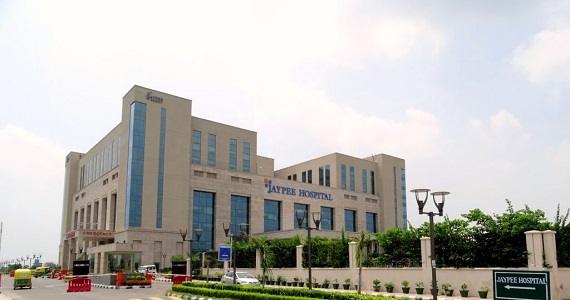VATS Thymectomy Treatment in India
treatment
starting from
Introduction:
Video-assisted thoracoscopic surgery (VATS) thymectomy is a minimally invasive surgical procedure used to remove the thymus gland. The thymus is a small gland located behind the breastbone and plays a crucial role in the development of the immune system, especially during childhood. Thymectomy is primarily performed to treat thymic disorders, including thymomas (tumors of the thymus gland) and myasthenia gravis (an autoimmune neuromuscular disorder). VATS thymectomy offers several advantages over traditional open surgery, leading to reduced postoperative pain, shorter hospital stays, and faster recovery. This article provides an overview of VATS thymectomy, including its principles, symptoms, causes, treatment, benefits, cost in India, and its significance in the management of thymic disorders.
Principles of VATS Thymectomy:
VATS thymectomy is a minimally invasive procedure that utilizes small incisions and specialized video cameras and instruments to visualize and remove the thymus gland. The principles of VATS thymectomy include:
- Minimally Invasive Approach: VATS thymectomy involves small incisions made in the chest, through which a thoracoscope (a thin, flexible tube with a camera) and surgical instruments are inserted.
- Precise Thymus Removal: The surgeon carefully dissects and removes the thymus gland, ensuring complete resection in cases of thymomas or as a treatment for myasthenia gravis.
- Preservation of Surrounding Structures: While removing the thymus, the surgeon aims to preserve surrounding structures, such as blood vessels and nerves, to minimize potential complications.
- Shorter Hospital Stay: Compared to traditional open surgery, VATS thymectomy allows for a shorter hospital stay and faster recovery.
Symptoms and Indications for VATS Thymectomy:
VATS thymectomy is primarily indicated for two main thymic disorders:
- Thymomas: Thymomas are tumors that develop in the thymus gland. These tumors can be benign (non-cancerous) or malignant (cancerous). VATS thymectomy is the preferred surgical approach for early-stage thymomas and some cases of locally advanced thymomas.
- Myasthenia Gravis: Myasthenia gravis is an autoimmune neuromuscular disorder that causes muscle weakness and fatigue. In some cases, thymectomy is performed to improve symptoms and reduce the need for medication in patients with myasthenia gravis.
Causes and Risk Factors:
The exact cause of thymomas and myasthenia gravis is not fully understood. However, some factors may increase the risk of developing these conditions:
- Thymomas: The cause of thymomas is largely unknown, but they are more commonly found in people with certain autoimmune disorders, such as myasthenia gravis.
- Myasthenia Gravis: Myasthenia gravis is caused by an abnormal immune response that targets and weakens the communication between nerves and muscles.
Treatment: VATS Thymectomy:
VATS thymectomy is performed under general anesthesia, and the patient is positioned on their side. The procedure typically involves the following steps:
- Pneumothorax: Carbon dioxide gas is introduced into the chest cavity to collapse the lung, providing a clear view of the surgical area.
- Trocar Placement: Several small incisions, known as trocars, are made in the chest to insert the thoracoscope and surgical instruments.
- Visualization: The thoracoscope provides real-time images of the thymus gland and surrounding structures, allowing the surgeon to navigate and perform the thymectomy.
- Thymus Removal: The surgeon carefully dissects and removes the thymus gland, ensuring complete resection in cases of thymomas.
- Closure: The incisions are closed, and the lung is re-inflated before completing the procedure.
Benefits of VATS Thymectomy:
VATS thymectomy offers several advantages over traditional open surgery:
- Minimally Invasive: VATS thymectomy involves smaller incisions, resulting in reduced postoperative pain and scarring.
- Shorter Hospital Stay: Patients who undergo VATS thymectomy typically have a shorter hospital stay and faster recovery compared to open surgery.
- Faster Recovery: The minimally invasive approach allows for quicker return to normal activities and reduced downtime.
- Reduced Complications: VATS thymectomy is associated with a lower risk of infection, bleeding, and other surgical complications.
- Improved Cosmesis: The small incisions in VATS thymectomy result in improved cosmetic outcomes compared to traditional open surgery.
Cost of VATS Thymectomy in India:
The cost of VATS thymectomy in India can vary based on factors such as the hospital or medical facility, the surgeon's expertise, the complexity of the procedure, and the patient's overall health. On average, the cost of VATS thymectomy in India ranges from ?2,50,000 to ?5,00,000 or more.
Conclusion
VATS thymectomy is a highly specialized and minimally invasive surgical procedure used to treat thymic disorders, including thymomas and myasthenia gravis. It offers several benefits, including reduced postoperative pain, shorter hospital stays, and faster recovery. VATS thymectomy plays a significant role in the management of thymic disorders, providing patients with improved outcomes and quality of life.
Patients with thymic disorders requiring surgical intervention should consult with a specialized thoracic surgeon to determine the most appropriate treatment plan. India, with its advanced medical infrastructure and skilled healthcare professionals, offers VATS thymectomy as a viable option for patients seeking minimally invasive thymus gland removal.
As medical technology continues to advance, VATS thymectomy is expected to become even more refined and accessible, further improving patient outcomes and the management of thymic disorders. Through ongoing research, specialized expertise, and a patient-centered approach, VATS thymectomy remains an important tool in the field of modern thoracic surgery.
How It Works
Need help in organizing medical travel to India?




